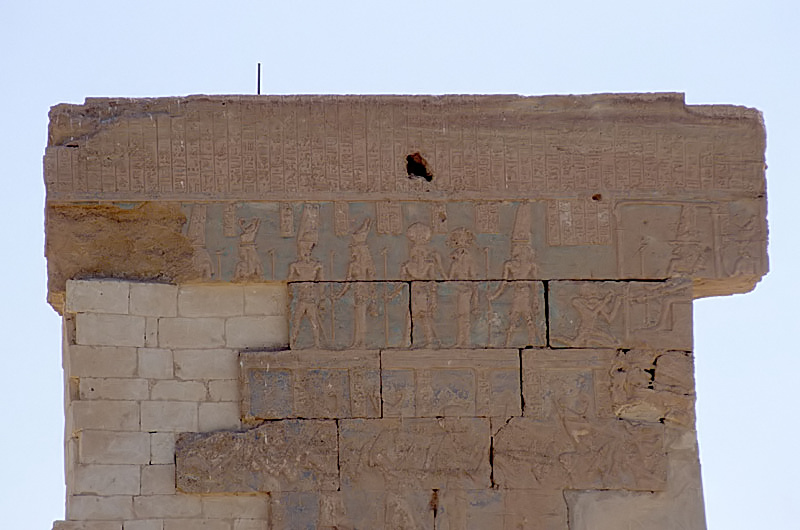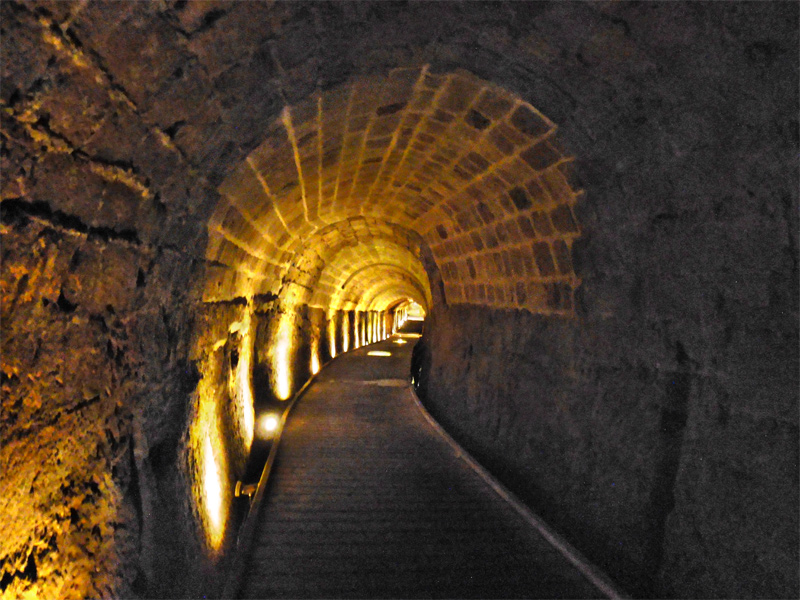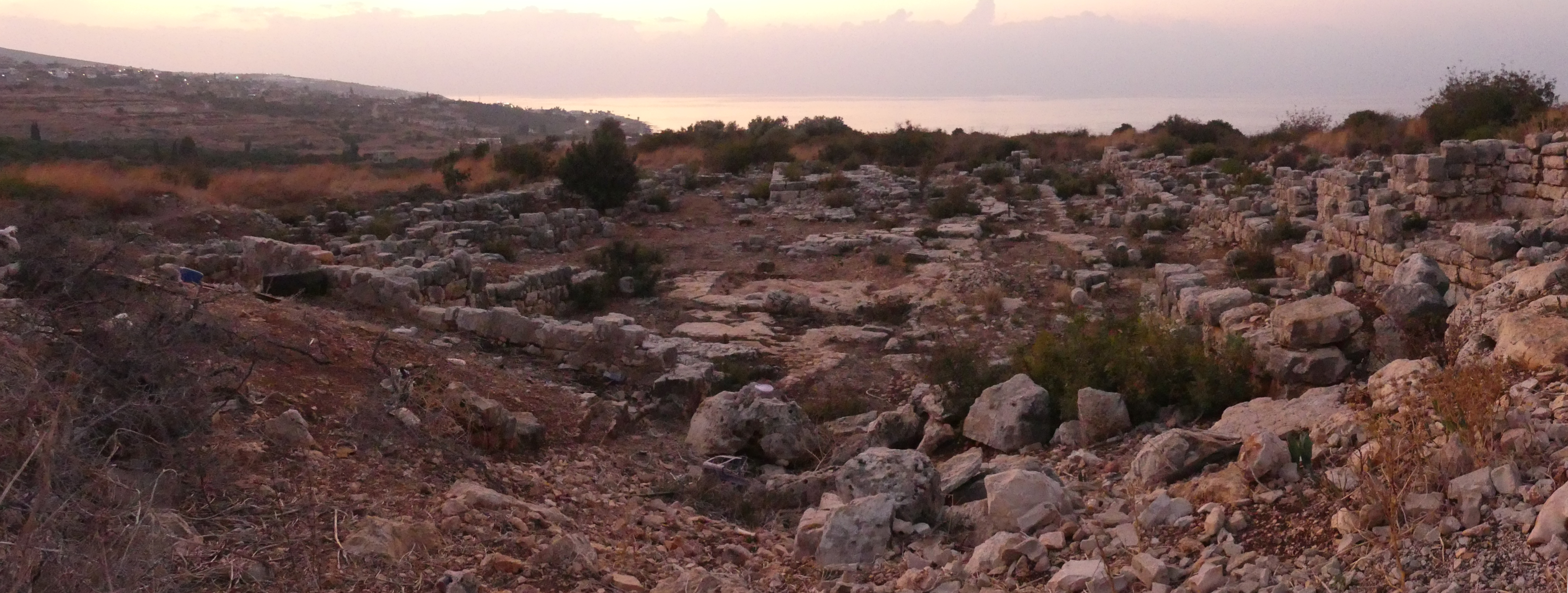|
Baal-hamon
Baal Hammon, properly Baʿal Ḥamon ( Phoenician and ), meaning "Lord Hammon", was the chief god of ancient Carthage. He was a weather god considered responsible for the fertility of vegetation and esteemed as king of the gods. He was depicted as a bearded older man with curling ram's horns. Baʿal Ḥammon's female cult partner was Tanit. Etymology He is identified as one of the Phoenician deities covered under the name of Baal. However, the meaning of his second name is unclear. Frank Moore Cross argued for a connection to ''Hamōn'', the Ugaritic name for Mount Amanus, a peak in the Nur Mountains that separate Syria from Cilicia. In the 19th century, when Ernest Renan excavated the ruins of Ḥammon, now Umm al-Amad, between Tyre and Acre, he found two Phoenician inscriptions dedicated to El-Ḥammon. Others have proposed Ḥammon as a syncretic association with Amun, the god of ancient Libya, In Siwa Oasis, a solitary oracle of Amun remained near the Libyan Desert, wh ... [...More Info...] [...Related Items...] OR: [Wikipedia] [Google] [Baidu] |
Sphinx
A sphinx ( ; , ; or sphinges ) is a mythical creature with the head of a human, the body of a lion, and the wings of an eagle. In Culture of Greece, Greek tradition, the sphinx is a treacherous and merciless being with the head of a woman, the haunches of a lion, and the wings of a bird. According to Greek myth, she challenges those who encounter her to answer a riddle, and kills and eats them when they fail to solve the riddle. This deadly version of a sphinx appears in the myth and drama of Oedipus. In Egyptian mythology, in contrast, the sphinx is typically depicted as a man (an androsphinx ()), and is seen as a benevolent representation of strength and ferocity, usually of a pharaoh. Unlike Greek or Levantine/Mesopotamian ones, Egyptian sphinxes were not winged. Both the Greek and Egyptian sphinxes were thought of as guardians, and statues of them often flank the entrances to temples. During the Renaissance, the sphinx enjoyed a major revival in European decorative art. D ... [...More Info...] [...Related Items...] OR: [Wikipedia] [Google] [Baidu] |
Nur Mountains
The Nur Mountains (, "Mountains of Holy Light"), formerly known as Alma-Dağ, the ancient Mount Amanus (), medieval Black Mountain, or Jabal al-Lukkam in Arabic, is a mountain range in the Hatay Province of south-central Turkey. It begins south of the Taurus Mountains and the Ceyhan river, runs roughly parallel to the Gulf of İskenderun, and ends on the Mediterranean coast between the Gulf of İskenderun and the Orontes ( Asi) river mouth. Geography The range is around 100 miles (200 kilometers) in length and reaches a maximum elevation of . It divides the coastal region of Cilicia from Antioch and inland Syria, making a natural border between Asia Minor (Anatolia) in the southeast region and the rest of Southwest Asia. Its highest peak is Bozdağ Dağı. A major pass through the mountains known as the Belen Pass (Syrian Gates) is located near the town of Belen, and another pass known as the Amanic Gates (Bahçe Pass) lies farther north. Biodiversity The Amanos Mo ... [...More Info...] [...Related Items...] OR: [Wikipedia] [Google] [Baidu] |
Pausanias (geographer)
Pausanias ( ; ; ) was a Greek traveler and geographer of the second century AD. He is famous for his '' Description of Greece'' (, ), a lengthy work that describes ancient Greece from his firsthand observations. ''Description of Greece'' provides crucial information for making links between classical literature and modern archaeology, which is providing evidence of the sites and cultural details he mentions although knowledge of their existence may have become lost or relegated to myth or legend. Biography Nothing is known about Pausanias apart from what historians can piece together from his own writing. However, it is probable that he was born into a Greek family and was probably a native of Lydia in Asia Minor. From until his death around 180, Pausanias travelled throughout the mainland of Greece, writing about various monuments, sacred spaces, and significant geographical sites along the way. In writing his '' Description of Greece'', Pausanias sought to put together ... [...More Info...] [...Related Items...] OR: [Wikipedia] [Google] [Baidu] |
Libyan Desert
The Libyan Desert (not to be confused with the Libyan Sahara) is a geographical region filling the northeastern Sahara Desert, from eastern Libya to the Western Desert (Egypt), Western Desert of Egypt and far northwestern Sudan. On medieval maps, its use predates today's Sahara, and parts of the Libyan Desert include the Sahara's most arid and least populated regions; this is chiefly what sets the Libyan Desert apart from the greater Sahara. The consequent absence of grazing, and near absence of waterholes or wells needed to sustain camel caravans, prevented Trans-Saharan trade between Kharga (the Darb al Arbein) close to the Nile, and Murzuk in the Libyan Fezzan. This obscurity saw the region overlooked by early European explorers, and it was not until the early 20th century and the advent of the motor car before the Libyan Desert started to be fully explored. Nomenclature The term ''Libyan Desert'' began to appear widely on European maps in the last decades of the 19th centu ... [...More Info...] [...Related Items...] OR: [Wikipedia] [Google] [Baidu] |
Oracle
An oracle is a person or thing considered to provide insight, wise counsel or prophetic predictions, most notably including precognition of the future, inspired by deities. If done through occultic means, it is a form of divination. Description The word ''oracle'' comes from the Latin verb ''ōrāre'', "to speak" and properly refers to the priest or priestess uttering the prediction. In extended use, ''oracle'' may also refer to the ''site of the oracle'', and the oracular utterances themselves, are called ''khrēsmoí'' (χρησμοί) in Greek. Oracles were thought to be portals through which the gods spoke directly to people. In this sense, they were different from seers (''manteis'', μάντεις) who interpreted signs sent by the gods through bird signs, animal entrails, and other various methods.Flower, Michael Attyah. ''The Seer in Ancient Greece.'' Berkeley: University of California Press, 2008. The most important oracles of Greek antiquity were Pythia (priestes ... [...More Info...] [...Related Items...] OR: [Wikipedia] [Google] [Baidu] |
Siwa Oasis
The Siwa Oasis ( ) is an urban oasis in Egypt. It is situated between the Qattara Depression and the Great Sand Sea in the Western Desert (Egypt), Western Desert, east of the Egypt–Libya border and from the Egyptian capital city of Cairo. It is famed from its role in ancient Egypt as the home to an oracle of Amun, the ruins of which are a popular tourist attraction, giving it the ancient name Oasis of Amun-Ra, after the major Ancient Egyptian deities, Egyptian deity. Geography The oasis is in a deep Depression (geology), depression that reaches below sea level. To the west, the al Jaghbub Oasis rests in a similar depression and to the east, the large Qattara Depression is also below sea level. The depression is fertile due to both natural Artesian well, flowing artesian wells and irrigation. It is the site of about 200 natural springs. Siwa is directly adjacent to the Libyan Desert plateau. The geology is characterised by horizontal layers of porous limestones alternated wi ... [...More Info...] [...Related Items...] OR: [Wikipedia] [Google] [Baidu] |
Ancient Libya
During the Iron Age and Classical antiquity, ''Libya'' (from Greek :wikt:Λιβύη, Λιβύη: ''Libyē'', which came from Berber language, Berber: ''Libu'') referred to the area of North Africa directly west of the Nile, Nile river (Modern day Libya, Tunisia, Algeria and Morocco), not to be confused with the modern country of Libya, which only represents the eastern part of the territory at the time. Ancient Libya was one of the three parts of the world of the ancients (Libya, Asia, Europa). The territory also had part of the Mediterranean Sea named after it called the Libyan Sea or ''Mare Libycum'' which was the part of the Mediterranean Sea, Mediterranean south of Crete, between Cyrene, Libya, Cyrene and Alexandria. Ancient Greece, Greek and Roman people, Roman geographers placed the dividing line between Libya and Asia at the Nile because the entire region south of the Mediterranean and west of the Nile was homogeneous linguistically, and the Berber language was used all acr ... [...More Info...] [...Related Items...] OR: [Wikipedia] [Google] [Baidu] |
Amun
Amun was a major ancient Egyptian deity who appears as a member of the Hermopolitan Ogdoad. Amun was attested from the Old Kingdom together with his wife Amunet. His oracle in Siwa Oasis, located in Western Egypt near the Libyan Desert, remained the only oracle of Amun throughout. With the 11th Dynasty ( BC), Amun rose to the position of patron deity of Thebes by replacing Montu. Initially possibly one of eight deities in the Hermapolite creation myth, his worship expanded. After the rebellion of Thebes against the Hyksos and with the rule of Ahmose I (16th century BC), Amun acquired national importance, expressed in his fusion with the Sun god, Ra, as Amun-Ra (alternatively spelled Amon-Ra or Amun-Re). On his own, he was also thought to be the king of the gods. Amun-Ra retained chief importance in the Egyptian pantheon throughout the New Kingdom (with the exception of the " Atenist heresy" under Akhenaten). Amun-Ra in this period (16th–11th centur ... [...More Info...] [...Related Items...] OR: [Wikipedia] [Google] [Baidu] |
Syncretism
Syncretism () is the practice of combining different beliefs and various school of thought, schools of thought. Syncretism involves the merging or religious assimilation, assimilation of several originally discrete traditions, especially in the theology and mythology of religion, thus asserting an underlying unity and allowing for an Inclusivism, inclusive approach to other faiths. While syncretism in art and culture is sometimes likened to eclecticism, in the realm of religion, it specifically denotes a more integrated merging of beliefs into a unified system, distinct from eclecticism, which implies a selective adoption of elements from different traditions without necessarily blending them into a new, cohesive belief system. Etymology The English word is first attested in the early 17th century. It is from Neo-Latin, Modern Latin , drawing on the (), supposedly meaning "Cretan federation". However, this is a spurious etymology derived from the naive idea in Plutarch's 1st- ... [...More Info...] [...Related Items...] OR: [Wikipedia] [Google] [Baidu] |
Acre, Israel
Acre ( ), known in Hebrew as Akko (, ) and in Arabic as Akka (, ), is a List of cities in Israel, city in the coastal plain region of the Northern District (Israel), Northern District of Israel. The city occupies a strategic location, sitting in a natural harbour at the extremity of Haifa Bay on the coast of the Mediterranean's Levantine Sea. In the Village Statistics, 1945, 1945 census Acre's population numbered 12,360; 9,890 Muslims, 2,330 Christians, 50 Jews and 90 classified as "other".Department of Statistics, 1945, p4Government of Palestine, Department of Statistics. ''Village Statistics, April, 1945.'' Quoted in Hadawi, 1970, p40 Acre Prison, Acre's fort was converted into a jail, where members of the Jewish underground were held during their struggle against the Mandate authorities, among them Ze'ev Jabotinsky, Shlomo Ben-Yosef, and Dov Gruner. Gruner and Ben-Yosef were executed there. Other Jewish inmates were freed by members of the Irgun, who Acre Prison break, brok ... [...More Info...] [...Related Items...] OR: [Wikipedia] [Google] [Baidu] |
Tyre, Lebanon
Tyre (; ; ; ; ) is a city in Lebanon, and one of the List of oldest continuously inhabited cities, oldest continuously inhabited cities in the world. It was one of the earliest Phoenician metropolises and the legendary birthplace of Europa (consort of Zeus), Europa, her brothers Cadmus and Phoenix (son of Agenor), Phoenix, and Carthage's founder Dido (Elissa). The city has many ancient sites, including the Tyre Hippodrome, and was added as a whole to the list of UNESCO World Heritage Sites in 1984. The historian Ernest Renan noted that "One can call Tyre a city of ruins, built out of ruins". Tyre is the fifth-largest city in Lebanon after Beirut, Tripoli, Lebanon, Tripoli, Sidon, and Baalbek. It is the capital of the Tyre District in the South Governorate. There were approximately 200,000 inhabitants in the Tyre urban area in 2016, including many refugees, as the city hosts three of the twelve Palestinian refugee camps in Lebanon: Burj el-Shamali, Burj El Shimali, El-Buss refugee ... [...More Info...] [...Related Items...] OR: [Wikipedia] [Google] [Baidu] |
Umm Al-Amad, Lebanon
Umm Al Amad (), or Umm el 'Amed or al Auamid or el-Awamid, is an Hellenistic period archaeological site near the town of Naqoura in Lebanon. It was discovered by Europeans in the 1770s, and was excavated in 1861. It is one of the most excavated archaeological sites in the Phoenician heartland. Description The Umm Al Amad site measures more than six hectares. Numerous artefacts from the site are held at the National Museum of Beirut and the Louvre. The site contains two temples, the Temple of Milk‘ashtart and the Eastern Temple with Throne Chapel, which are estimated to have been built between 287 and 222 BCE. 23 Phoenician Adoration steles have been found at the site depicting upright people in an "adoration gesture", all dating from 100 to 400 BCE. History Umm Al Amad was apparently built in the Persian or Hellenistic period, although some scholars have argued for earlier. No buildings from the Roman era were discovered, but there is evidence for Byzantine reoccupatio ... [...More Info...] [...Related Items...] OR: [Wikipedia] [Google] [Baidu] |







